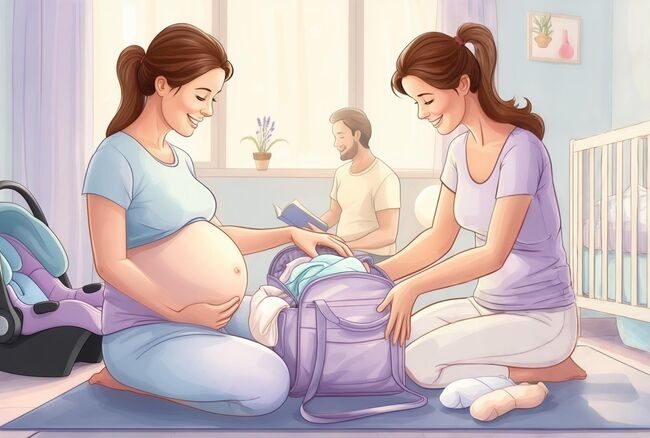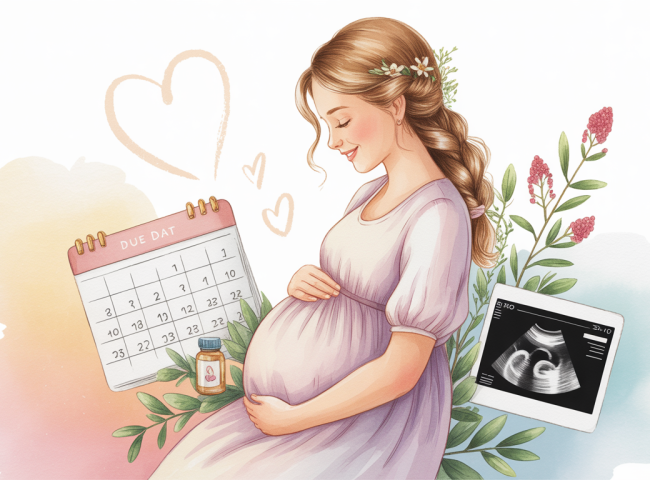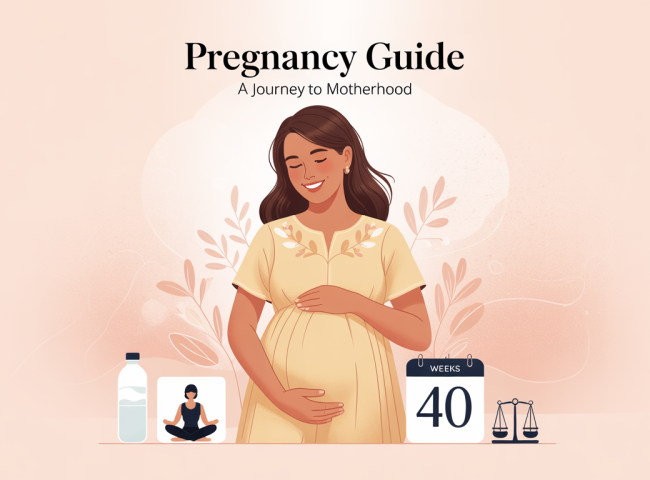📆 Snapshot: Weeks 28–40+ are all about final growth, birth preparation, and monitoring baby’s position and health. It’s time to slow down, stock up, and get ready for labor.
What Is the Third Trimester?
The third trimester begins at week 28 of pregnancy and lasts until birth (usually between weeks 38–42). During this time, your baby rapidly gains weight, practices breathing, and settles into position for delivery. You’ll likely experience more physical strain as your body prepares for labor and delivery.
🧠 Key Milestones
| Week | Development |
|---|---|
| 28–30 | Eyes open, brain and lungs mature |
| 31–33 | Rhythmic breathing movements; baby detects light & sound |
| 34–36 | Baby’s head often moves into pelvis (“lightening”) |
| 37–40+ | Full term: body fat builds, organs ready for life outside the womb |
🤰 Common Third-Trimester Symptoms
- Shortness of breath: As baby grows, pressure on lungs increases.
- Swelling: Especially in feet and ankles due to fluid retention.
- Frequent urination: Baby’s head presses on your bladder.
- Braxton Hicks contractions: Irregular, “practice” contractions that may increase in frequency.
- Insomnia: Hormones, discomfort, and anxiety can disrupt sleep.
- Leaky breasts: Colostrum (early milk) may start to appear.
Tip → Rest when you can, elevate your feet, and stay hydrated to reduce swelling.
🩺 Essential Tests & Check-Ups
| Timing | What Happens | Why It Matters |
|---|---|---|
| Week 28 | Glucose tolerance test (if not done earlier) | Screens for gestational diabetes |
| Week 28–36 | Tdap vaccine (recommended) | Protects baby from pertussis |
| Week 35–37 | Group B strep (GBS) swab | Identifies bacteria that may require antibiotics in labor |
| Weekly (36+) | Cervical checks, fetal position, monitoring | Tracks labor readiness |
Your OB/midwife may also discuss birth plans, pain relief options, and signs of true labor.
🥗 Third-Trimester Nutrition
| Nutrient | Why It Matters | Sources |
|---|---|---|
| Iron | Prevents anemia before birth | Spinach, lentils, red meat |
| DHA | Supports baby’s brain growth | Salmon, walnuts, eggs |
| Fiber | Eases constipation | Whole grains, fruits, veggies |
| Fluids | Reduces swelling, supports blood volume | Water, herbal teas, broth |
Small meals and upright posture after eating can help reduce heartburn.
🛑 What to Avoid
- Long periods of lying flat on your back
- Travel after week 36 (consult provider)
- Strenuous lifting or overexertion
- Ignoring signs of preterm labor (cramping, back pain, fluid leak, bleeding)
✅ Third-Trimester Checklist
✔️ Finalize your birth plan
✔️ Choose a pediatrician
✔️ Pack your hospital bag
✔️ Install the car seat (and get it inspected if possible)
✔️ Attend a childbirth or breastfeeding class
✔️ Stock up on postpartum supplies (pads, nursing bras, etc.)
Frequently Asked Questions
How will I know it’s real labor?
True contractions come at regular intervals, get stronger over time, and don’t stop with rest. You may also feel pelvic pressure, lose your mucus plug, or experience your water breaking.
Is it safe to have sex?
In most pregnancies, yes — unless your provider advises otherwise (e.g., if you have placenta previa or risk of preterm labor).
What if I go past 40 weeks?
Many people deliver between 40–42 weeks. Your provider may suggest induction if risks increase after 41 weeks.
Next Steps
➡️ Prepare for Labor and Delivery
📦 Set up your nursery and recovery space
🛌 Rest when you can — your body is doing incredible work
For educational use only. Always consult your OB or midwife for personalized medical advice.






Leave feedback about this